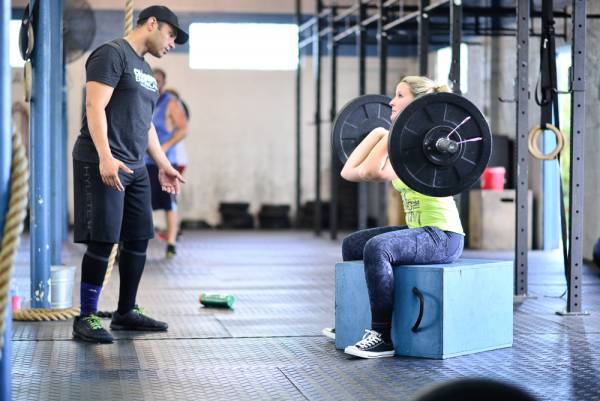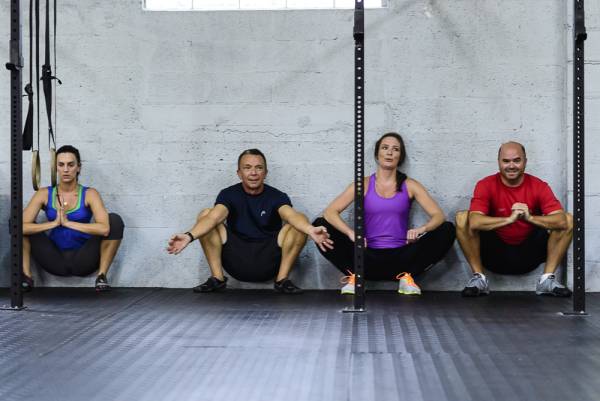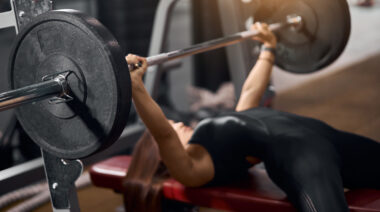Have you hit a plateau in your training? Getting frustrated because you just can’t get even one more pull up or add any more weight to your lifts? Or maybe you’ve even had to decrease your weight?
Plateaus can be challenging to deal with both physically and mentally, especially if you feel you are doing everything right. If that is your situation, I’m here to tell you there is one more reason you are stuck in your plateau. The reason you’re not getting stronger is that you don’t know how to move.
How You Got So Dysfunctional
You might not realize this, but chances are your movement is dysfunctional. Your body is quite amazing and will adapt to whatever you throw at it in order to make sure you maintain movement and stability. The problem is, you usually throw things at it like crappy posture, sedentary activities, and poor form. This leads your body to adapt and compensate for weak links by moving dysfunctionally.
Initially, this doesn’t seem to be a problem as it allows the desired movement to occur, but the problem is when dysfunctional movement becomes the norm. This causes a number of other musculoskeletal issues, in addition to a pretty much guaranteed injury down the road. And, not to mention, a complete stall in your strength gains.
Want bust through your plateau? You need to fix your movement. Learn to move well. Take a read through the rest of this article to learn exactly why you aren’t moving properly, and why it’s limiting your strength gains.
You Don’t Have Good Pillar Strength
Your core is your pillar, the foundation of all of your movement. EXOS, formally known as Core Performance, puts this in an easy-to-understand way. They describe this pillar by comparing it to a wheel, with your core being the hub and your limbs, the spokes. You see, if you don’t have a strong pillar, or strong core, you simply cannot efficiently or forcefully move your limbs. So, how are you expecting to increase your lifts?
Your limbs need to be attached to a solid, stable core. Without this, you will not be able to transfer energy through your body effectively. You will produce less strength and power, and fatigue much easier. Your lifts won’t increase as they could, and you will not only be lifting below your full potential, but you will also be cementing in a dysfunctional movement pattern, setting yourself up for future injury.
You Have Muscle Imbalances and Crappy Alignment
Believe it or not, as a physical therapist, most athletes I see for the first time have a muscle group that is entirely shut off and not working. Yes, these are athletes who are highly competitive and successful, yet they still have a muscle group that is not working properly. Imagine the success they have when we get everything working!
The same is true for most people I see in my clinic. Lifestyle factors such as sitting most of the day and sedentary activities mean that people develop poor posture and alignment, causing certain muscles to become short and overactive while others become weak and lengthened.

And until you actually work to address these imbalances, they just get worse. Like I always tell my clients – the strong get stronger, the weak get weaker. You see, your body will automatically do what it knows best. If your glutes are weak and quads strong, which muscle group do you think will be your go-to when you start doing squats? Your quads, of course.
But, your glutes are actually your strongest hip extensors, so if they are not working effectively, then it is pretty obvious why you aren’t making any strength gains on your squat. You are not tapping in to the huge potential power and strength of this underactive muscle group.
It is these weak links, these underactive muscles, that are not only preventing you from moving more weight, but also from staying injury free. Furthermore, these weak links can lead to decreased range of motion and mobility, as well as decreased joint stability. More factors that can limit the how much weight you can pull.
You Lack Stability
Though this section could be joined with the above, I feel it deserves its own, as it such an important concept to understand. Your stabilizing muscles are absolutely crucial for both injury resilience and strength performance. These muscles are meant to stabilize your joints, which then allow your prime movers (the muscles primary responsible for movement) to do all the heavy lifting.
However, what often happens is that these stabilizing muscles stop working properly (due to poor alignment or muscle imbalances, as discussed above), leading to instability under heavier loads and to your prime movers having to take over and do some of the work to stabilize your joints. This means your prime movers are already overworked and in an improper position and, therefore, won’t be able to work effectively during a lift. This translates to a decreased output of strength.
And just so you know, this can all happen with zero pain. Meaning, you might not even realize there is a problem. That is, until you do have pain and you do realize there is a problem – and I promise you, that day will come.

Your Mobility Sucks
This section is going to be short and sweet. If you have poor mobility – say of your hips, thoracic spine, or shoulders – then you are not going to be able to lift to your full potential. Your body needs to be in the proper position to work most effectively.
Don’t believe me? Try this. Sit down and slouch. Now lift your arms above your head. See how hard that is? And how little range of motion you get? Now sit tall and do the same thing. See how much easier that was? Now imagine adding weight. Of course it is going to take much more effort to lift the weight in a poor body position.
The same is true for our lifts in the gym. Poor mobility means poor and inefficient movement, which translates into us expending far more energy then required. Simply put, this means exerting more effort to lift less weight than you could be capable of.
What You Can Learn From Your Plateau
As you can see, each point I mentioned here is related to the next. Realistically, they could all be one giant section, as you usually would never have one without another. Poor pillar strength can lead to poor mobility, decreased stability, crappy alignment, and muscle imbalances. Poor mobility and alignment can lead to the same. The commonality to each point I made above is that they are related to how we move. To move optimally and efficiently, all of these need to be in check.
And as I mentioned, you can move dysfunctionally without any pain or any clue that you do so. But if you do, your performance will suffer, and it won’t be a matter of if you are going to get injured, but when.
Your plateau is not only frustrating, but it is also as a sign. A sign you are not moving well and are at risk for injury. A sign you need to change something. Get a movement screen. See an experienced strength coach or physical therapist. Find out what isn’t working and fix it. Then, watch as you blast through your plateau, all the while feeling great!
References:
1. Pillar Strength 101, Exos, Core Performance. Accessed August 27, 2014.
Photos courtesy of CrossFit Empirical.






